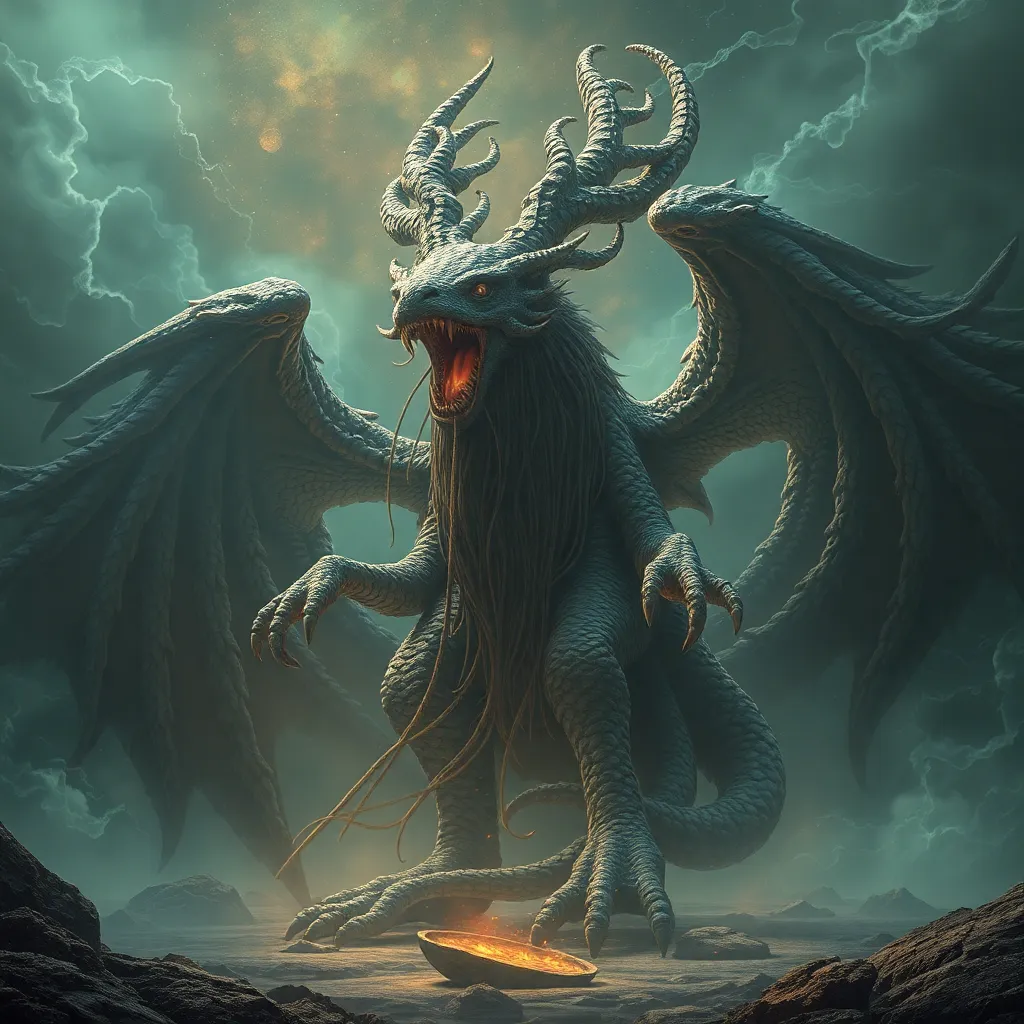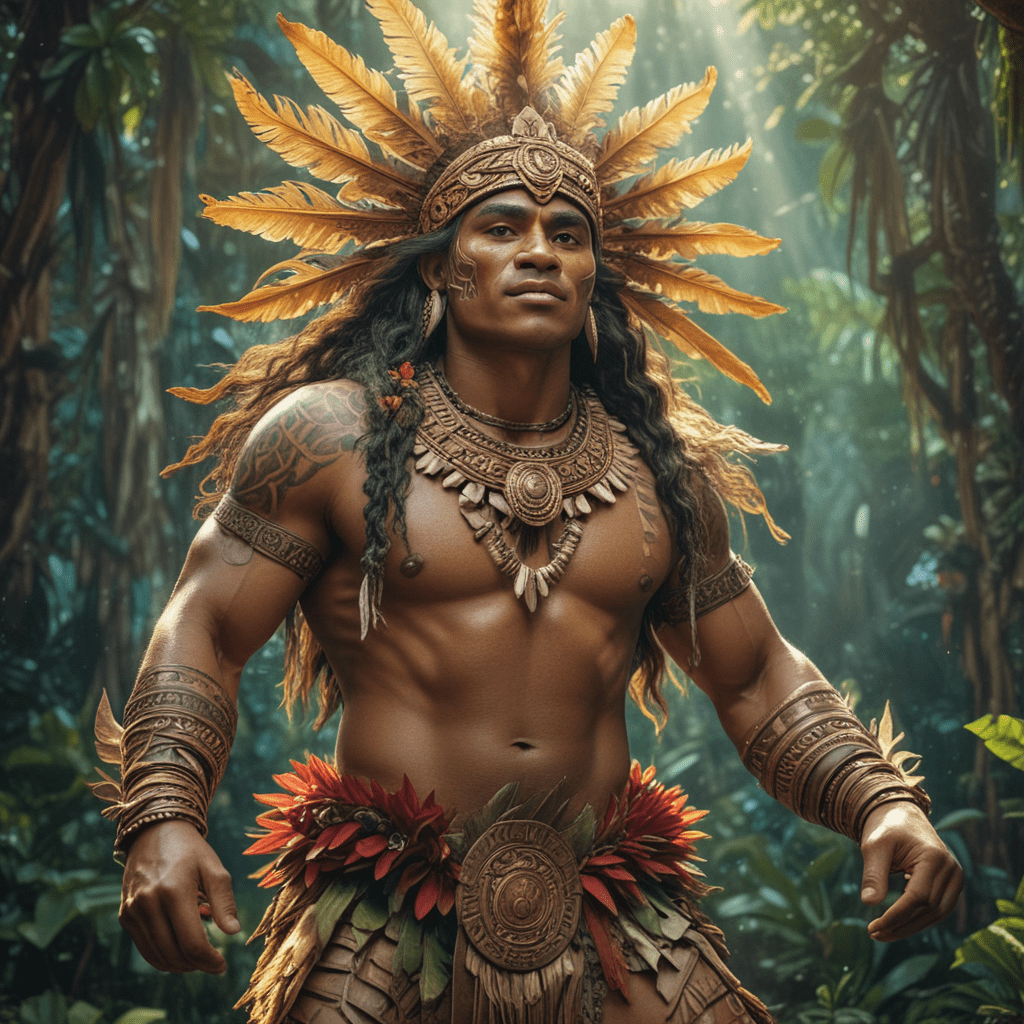Exploring the Roots of the Netherworld: Níðhöggr in Mesopotamian Mythology
I. Introduction
Níðhöggr, a fearsome serpent from Norse mythology, holds a significant place in the rich tapestry of mythological narratives. This article aims to delve into the connections between Níðhöggr and the underworld themes present in Mesopotamian mythology, exploring how these ancient cultures conceptualized the netherworld and its inhabitants.
The purpose of this exploration is to highlight the similarities and differences in how the netherworld and its creatures are depicted across various mythologies, particularly focusing on the role of Níðhöggr in Norse beliefs and its potential parallels in Mesopotamian traditions.
The netherworld, often viewed as a realm of the dead, is a common theme in many mythologies, serving as a place of judgment, punishment, or rebirth. By investigating these connections, we can gain a deeper understanding of how ancient societies perceived life, death, and the afterlife.
II. Understanding Níðhöggr: The Mythical Serpent
Níðhöggr is depicted as a dragon or serpent that gnaws at the roots of Yggdrasil, the World Tree in Norse cosmology. This creature is not merely a passive inhabitant of the underworld; it actively participates in the cycle of destruction and decay. Níðhöggr symbolizes the inevitable decay of all things, representing an essential aspect of existence in Norse belief systems.
In the context of Yggdrasil, Níðhöggr’s role is crucial. Yggdrasil is the cosmic tree that connects different realms, including Asgard (the realm of the gods), Midgard (the realm of humans), and Hel (the realm of the dead). Níðhöggr, residing in the depths of Hel, signifies the darker aspects of life and death, embodying chaos, destruction, and renewal.
The symbolism of Níðhöggr as a creature of decay and destruction serves to remind us of the cyclical nature of existence. Just as life is born from the earth, it must also return to it, highlighting the interconnectedness of all living things.
III. The Mesopotamian Underworld: A Comparative Overview
In Mesopotamian mythology, the underworld, known as Kur or Irkalla, is a dark and dreary place where the souls of the dead reside. Unlike the more structured afterlife concepts in other cultures, the Mesopotamian view of the afterlife is often seen as bleak, devoid of joy and light.
Key figures associated with the Mesopotamian underworld include:
- Ereshkigal: The queen of the underworld, she governs the realm of the dead and is often portrayed as a powerful and fearsome deity.
- Gillu: A spirit of the underworld that represents the restless souls of the dead.
- Dumuzi: A fertility deity whose death and descent to the underworld symbolize seasonal cycles of life and decay.
Mesopotamian mythology emphasizes themes of fertility, decay, and rebirth, illustrating a complex relationship with life and death. The underworld is not merely a place of punishment but also one of transformation, where the cycle of life continues beyond death.
IV. Parallels Between Níðhöggr and Mesopotamian Deities
When examining the representations of serpents and dragons in both Norse and Mesopotamian mythologies, notable similarities emerge. In both traditions, these creatures are often associated with chaos, death, and the underworld.
The role of Níðhöggr and its counterparts in Mesopotamian mythology reflects a shared understanding of the cycle of life and death. Both Níðhöggr and Mesopotamian deities like Ereshkigal embody the themes of destruction and renewal, reinforcing the idea that decay is a necessary precursor to rebirth.
Additionally, the comparative analysis of chaos and order reveals that both mythologies grapple with the balance between these forces. Níðhöggr, as a chaotic entity, contrasts with the structured realms of the gods, while Mesopotamian deities often maintain a delicate balance between chaos and order in their governance of the underworld.
V. The Role of the Underworld in Cultural Narratives
The underworld plays a fundamental role in shaping cultural identity, influencing how societies perceive life, death, and the afterlife. In Norse mythology, myths involving Níðhöggr illustrate the importance of acknowledging decay and destruction as part of existence.
In contrast, Mesopotamian myths emphasize the consequences of actions in life and the importance of proper burial rituals to ensure safe passage to the underworld. These narratives have profound implications for the respective societies, shaping their values and beliefs.
VI. Archaeological Evidence and Artistic Depictions
Archaeological findings reveal a wealth of serpentine figures in Mesopotamian art, often depicted in association with the underworld and its deities. These figures serve as a testament to the significance of serpents in their cultural and religious practices.
In Norse artifacts, artistic representations of Níðhöggr often highlight its menacing nature, emphasizing its role as a guardian of the underworld. The imagery surrounding Níðhöggr informs our understanding of ancient Norse beliefs about death and the afterlife.
Through the study of these depictions, we can glean insights into the cultural beliefs of both societies, revealing how they interpreted the concepts of life, death, and the afterlife.
VII. The Influence of Níðhöggr on Modern Interpretations
Níðhöggr has found a place in contemporary literature and media, often symbolizing the darker aspects of existence. Modern interpretations of Níðhöggr reflect a resurgence of interest in ancient mythologies, showcasing the enduring legacy of these narratives.
Similarly, Mesopotamian themes resonate within modern storytelling, as contemporary creators draw upon ancient myths to explore complex themes of life, death, and rebirth. This revival illustrates the timeless nature of these narratives and their relevance to modern audiences.
VIII. Conclusion
In summary, the exploration of Níðhöggr and its connections to Mesopotamian mythology reveals profound insights into the shared themes of decay, destruction, and renewal. Both cultures grappled with complex understandings of the underworld, shaping their identities and beliefs around the cycles of life and death.
The study of these mythologies not only enhances our understanding of ancient societies but also illustrates the timeless nature of their narratives, resonating with contemporary audiences in meaningful ways.



